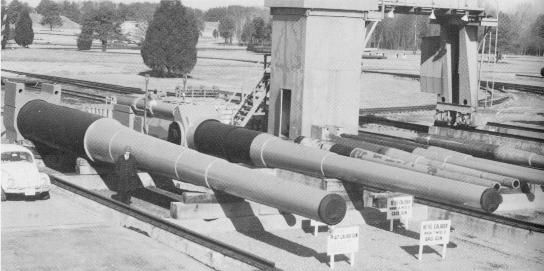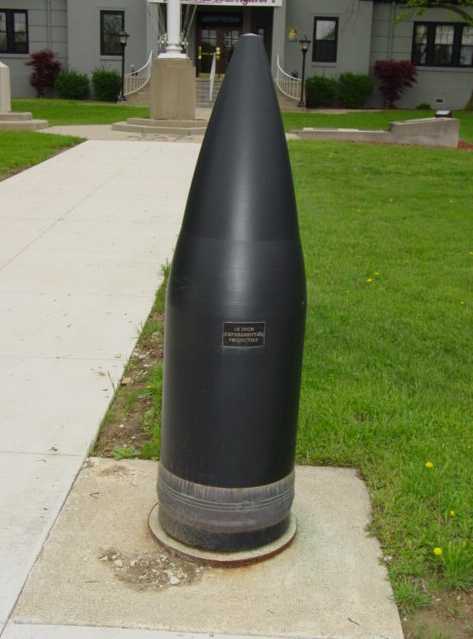|
Battleship design studies conducted in 1927-28 and again in 1938 considered using the 18"/48 (45.7 cm) gun, but the USN rejected it both times for the following reasons: 1) Excessive weight, 2) Very short liner life, 3) Lack of sufficient angle of descent for all but very long ranges - i.e., little deck penetration capability. The use of this weapon would also have violated all of the Naval Limitation Treaties of the 1920s and 1930s, possibly the most important factor in its rejection. Tests with this weapon in the 1920s and 1930s convinced BuOrd that standard 18" (45.7 cm) AP projectiles had only marginally better armor penetration than 16" (40.6 cm) shells. In addition, design studies showed that the same size battleship could carry a maximum of only six or seven of the much heavier 18" (45.7 cm) guns vs. nine 16"/50 (40.6 cm) guns, even if the armor protection remained the same. The larger gun would also have had a slower rate of fire, as the heavier shells required would have been more difficult to handle. These conclusions led to the development of "super-heavy" AP projectiles in the late 1930s, which made the US guns using them superior to other nation's weapons of the same caliber. The start of World War II removed all treaty limitations and revived interest in larger caliber weapons. In 1941, the threaded tip was cut off and a new 18" (45.7 cm) liner installed. This weapon was then redesignated as the 18"/47 (45.7 cm) Mark "A" test gun and "super-heavy" 18" (45.7 cm) AP projectiles were designed for it. The gun was first test fired in this new configuration in February 1942 and a few more times until the end of the war. The eclipse of the battleship by carrier aircraft greatly reduced the Navy's interest in pursuing further development of large caliber weapons and the prototype was finally retired just after World War II. It is now on display at the Dahlgren Naval Weapons Facility in Virginia, USA, as shown in the photograph below. Constructed of liner, A tube, jacket, nine hoops, six locking rings, a separate yoke ring and screw box liner. The breech mechanism was a down-swinging Welin block with vertical lever operating gear. Chromium plating of the bore was considered in the 1940s but never carried out. |

Display at Dahlgren Naval Weapons Facility (now Dahlgren Naval Surface Warfare Center) in Virginia The 18"/47 (45.7 cm) Mark "A" is the leftmost gun and a 16"/50 (40.6 cm) Mark 7 gun as used on the Iowa's is just to its right. Both of these weapons fired projectiles heavier than the Volkswagen on the left. Just to the right of these guns is a 8"/55 (20.3 cm) Mark 16 used on the Des Moines Heavy Cruisers. Further to the right is one of the 8"/60 (20.3 cm) SK C/34 guns taken from the forward turret of the German Cruiser Prinz Eugen, which was allocated to the USA as a war prize at the end of World War II. |

One of two 18" (45.7 cm) "Super-Heavy"
Projectiles on display at Building One, NWSC Crane, Indiana
|